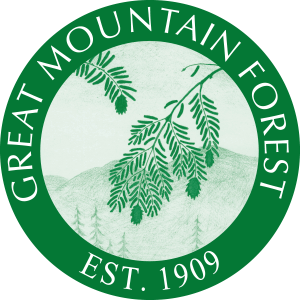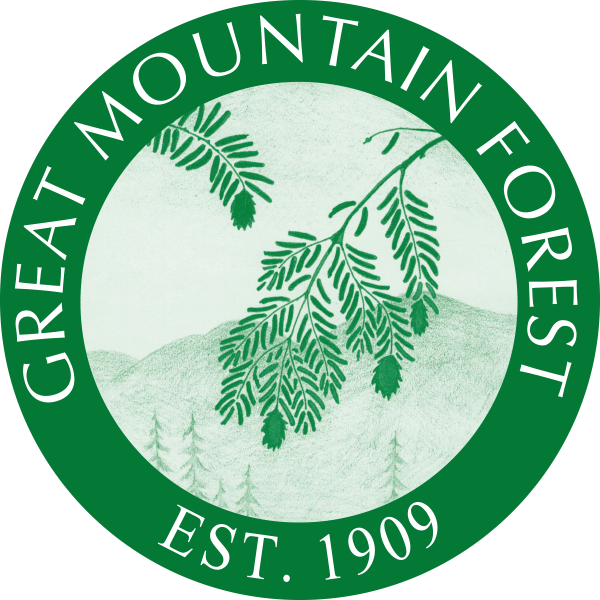Unearthing the Past: A Geological Quest in Great Mountain Forest

Most Prevalent Themes:
- Geologic Time & Rock Formation – MS-ESS1-4
- Rock Cycle & Earth’s Material Cycling – MS-ESS2-1
- Glacial Processes & Landscape Change – MS-ESS2-2
- Soils as Links Between Geology & Ecology – MS-ESS2-1, MS-ESS2-2
- Natural Resources & Human History – MS-ESS3-1
Audience:
Middle School (adaptable to elementary and high school)
Duration:
5 hours
Description
This hands-on, interactive field trip will take students through Great Mountain Forest (GMF) in Northwest Connecticut to investigate the geological processes that shaped the landscape. Students will explore glacial features like bedrock and glacial erratics, roche moutonnée, a charcoal mound, and a kettle pond. They will use scientific tools such as compasses, magnifying lenses, and soil analysis equipment, model the formation of a kettle pond, and analyze how different rock types and minerals affect local ecosystems. Engaging, tactile activities—including edible rock demonstrations—help students understand the rock cycle, plate tectonics, and how glaciers altered the region.
Throughout the day, students are challenged to develop and support claims about Earth’s past, the forces that shaped it, and how human choices impact soil, forest health, and biodiversity. They will observe evidence, weigh competing ideas, and construct reasoning to explain the connections between geology, ecology, and human activity. The geology module doesn’t just teach students about rocks—it asks them to think critically about how Earth’s history shapes today’s ecosystems and how humans can influence environmental outcomes. By emphasizing these connections, the module cultivates environmental stewardship, conservation ethics, and a deeper understanding of the consequences of human choices. This is a full-day field trip.
Learning Intentions:
By the end of the session, students will be able to:
- Describe how glaciers and tectonic forces shaped the landscape of Great Mountain Forest.
- Identify and classify different rock types (igneous, metamorphic, sedimentary) using texture and visual clues.
- Explain how kettle ponds and glacial erratics form, using evidence from real-world observations.
- Analyze soil samples to compare texture, pH, and the relationship between soil and local vegetation.
- Make connections between geology and human history by exploring how natural resources like rock and charcoal influenced early industry.

